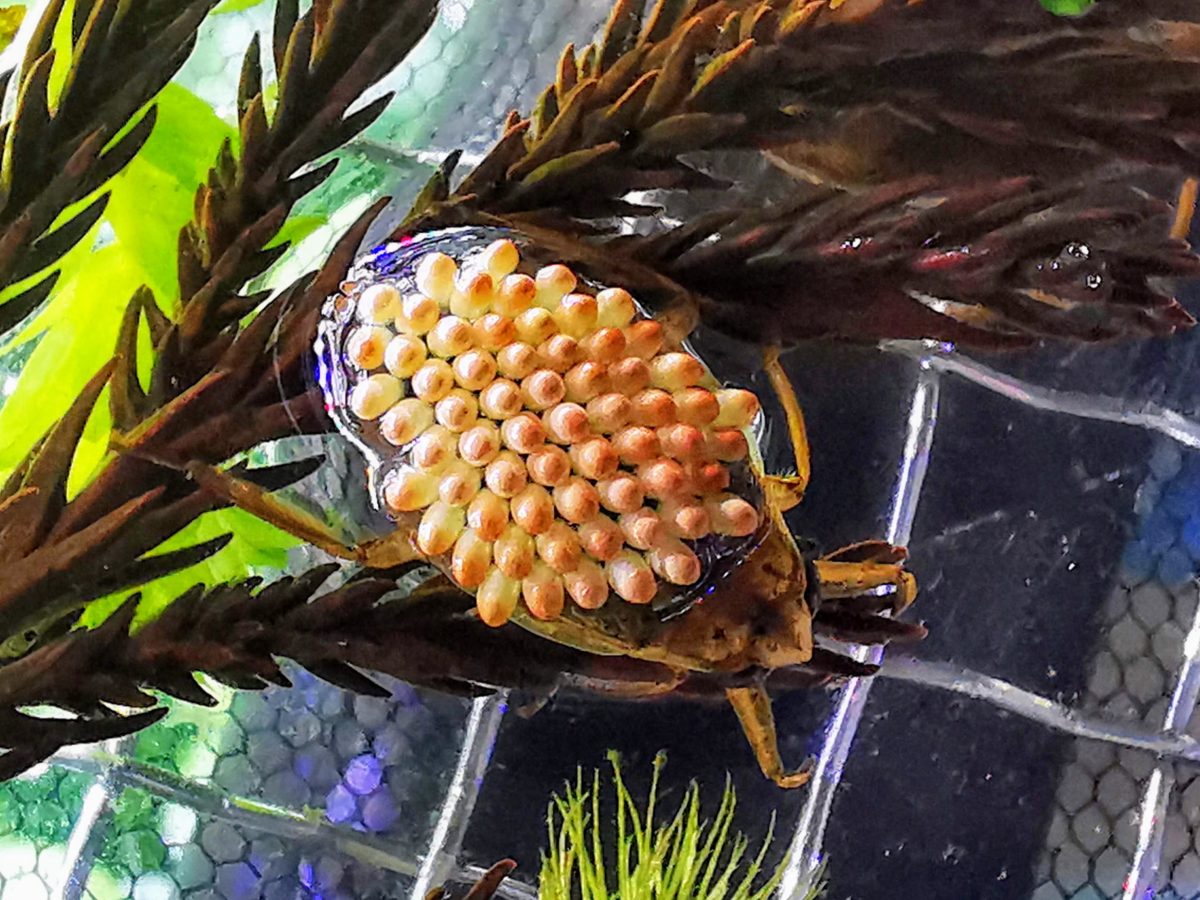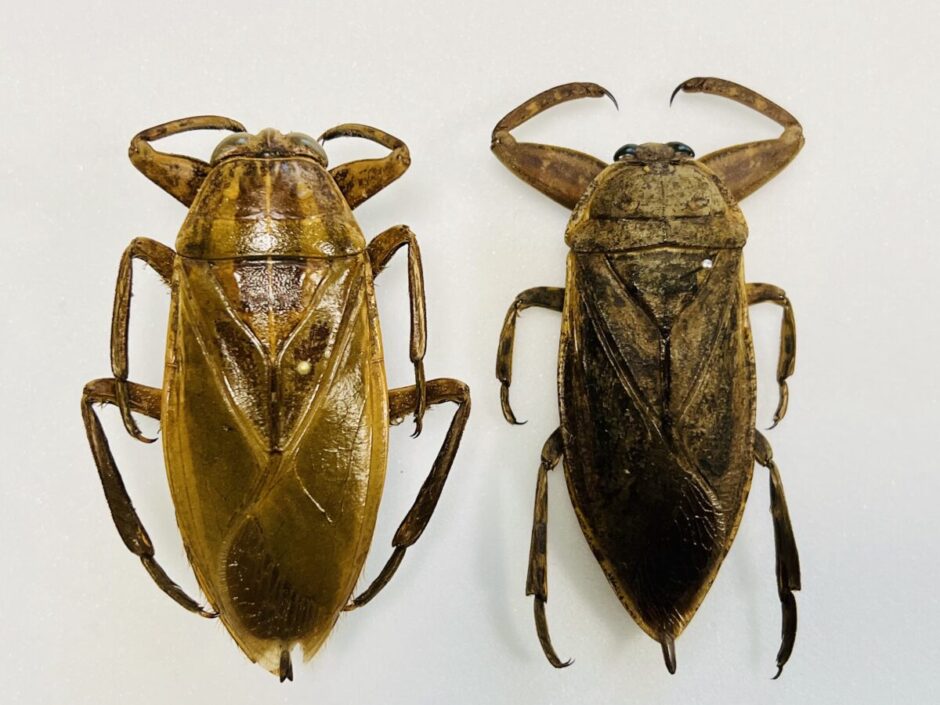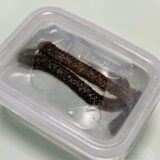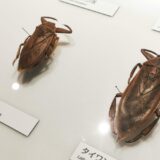The world is wide! African Hydrocyrinus is a large Giant Water Bug. While holding the size of 5-7 cm of the same size as a Lethocerus, carry the egg on the back like Belostomatinae. Specimens are distributed relatively abundantly, and they are also exhibited in the Ishikawa Fureai Insect Museum.
Africa has Belostomatinae that grow to 5-7 cm
Looking around the world, you can see Lethocerinae has many species in Southeast Asia, America, Africa, etc. Japanese Giant Water Bug have unique features such as having a large foreleg in physique ratio,It is classified as the genus Kirkaldyia, independent of the genus Lethocerus.
On the other hand, Africa is interesting Giant Water Bug scold that becomes the size of a Belostomatinae while there is a Giant Water Bug of the genus Lethocerus. Hydrocyrinus have multiple species, but there is no detailed material.
The photo below shows Hydrocyrinus from Mali, Africa, on the left and Japanese Giant Water Bug (Kirkaldyia deyrolli) on the right.

Hydrocyrinus is as large as Lethocerinae, but its appearance and ecological characteristics are that of Belostomatinae itself.
- Unlike Lethocerinae, adult forelegs also have two claws
- Males carry eggs to protect them
- Forelegs do not spread sideways and hold up and down like mantises
- The head extends wider sideways than Lethocerinae
Hydrocyrinus has two foreleg claws, the head isNote that it is nearly twice as large as a Lethocerinae.

Japanese Belostomatinae “Appasus japonicus”
Belostomatinae is a member of the aquatic insects and lives all over the world. Appasus japonicus is about 2 cm in size.Appasus japonicus has a sickle-like foreleg, catches and eats small worms. By the 1980s, japanese aquatic insects had greatly reduced their population due to pesticides, the modernization of agriculture, and the invasion of alien species such as American crags.
Japanese Appasus japonicus is an introductory species of aquatic insects, and they are more numerous than Giant Water Bug and Diving Beetle, and can be said to be ordinary species in Japan. It is important to note that adults can be reared in groups, but the number of eggs is repeated and the number increases, and that children cannibalize.




